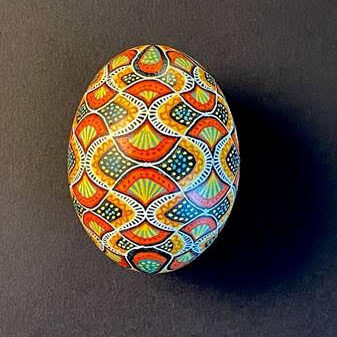Easter, a time of renewal and celebration, is marked by various traditions around the world. One such tradition that often goes unnoticed is the exquisite art of Ukrainian Easter egg decorating, known as Pysanka. In the rush of modern life, this ancient craft has, unfortunately, become a forgotten gem. Let’s delve into the rich history, intricate techniques, and the cultural significance of Pysanka.
Unraveling the Threads of History
Pysanka, derived from the Ukrainian word “pysaty,” meaning “to write,” has roots that trace back thousands of years. The tradition of egg decoration predates Christianity in Ukraine, with early examples dating back to the Trypillian culture. Initially, these eggs were adorned with simple geometric patterns and served as talismans for protection.
With the advent of Christianity in Ukraine, the symbolism of Pysanka evolved. Eggs became a representation of Christ’s resurrection, symbolizing life, fertility, and the triumph of good over evil. The intricate designs on Pysanky eggs are not merely decorative; each element carries deep symbolic meaning, often passed down through generations.
The Artistic Process: A Dance of Wax and Dye
Creating a Pysanka is an intricate process that requires patience, skill, and a deep understanding of symbolism. The artist begins with a plain egg, usually white or brown. The first step involves sketching the design lightly with a pencil, ensuring symmetry and balance. Then, using a tool called a kistka, the artist applies melted beeswax to the areas they want to keep white.
Once the wax is applied, the egg is dipped into the lightest dye color. The areas covered in wax resist the dye, creating the base color. The process is repeated, with wax applied to different sections for each color layer. The egg is progressively dipped into darker dyes, creating a stunning, multicolored masterpiece.
After the final dye has set, the wax is carefully melted off, unveiling the vibrant colors and intricate patterns. The result is a Pysanka egg that tells a visual story, combining Christian symbolism with ancient folk art.
Preserving Tradition in a Modern World
In the fast-paced digital age, traditional crafts like Pysanka face the risk of fading into obscurity. However, there is a growing movement to preserve and revive these cultural practices. Workshops, online tutorials, and community events are helping to pass on the knowledge and skills required to create Pysanky.
Beyond preserving the craft itself, the cultural significance of Pysanka is being recognized on a broader scale. Museums showcase these delicate masterpieces, and artists are infusing modern themes into their designs, bridging the gap between tradition and contemporary expression.
Pysanka Around the World
While Pysanka is deeply rooted in Ukrainian culture, its allure has spread far beyond the borders of Ukraine. Ukrainian diaspora communities around the world, from Canada to Brazil, continue to keep the tradition alive. In these communities, Pysanka workshops and exhibitions serve as a connection to their cultural heritage.
In recent years, Pysanka has gained recognition in mainstream culture as well. Artisans and enthusiasts from various backgrounds are exploring this captivating art form, adding their unique twists and interpretations.
FAQs: Unlocking the Secrets of Pysanka
Q1: Can anyone create Pysanky eggs, or is it a specialized skill?
A: While Pysanka requires practice and skill, anyone can learn the art with dedication and guidance. Numerous tutorials and workshops cater to beginners, providing step-by-step instructions and tips.
Q2: Are there specific meanings behind the colors and symbols used in Pysanka designs?
A: Yes, each color and symbol holds significance. For example, red represents the love and passion of Christ, while geometric patterns convey protection. Learning the meanings adds depth and intention to the creative process.
Q3: How can I incorporate Pysanka into my Easter traditions if I’m not Ukrainian?
A: Pysanka is a universal celebration of life and renewal. Consider attending a workshop, exploring online resources, or simply appreciating the art form. Adding a Pysanka to your Easter decorations can be a beautiful way to embrace diversity and tradition.
In conclusion, the Pysanka tradition is a captivating journey through history, artistry, and cultural significance. As we celebrate Easter and the spirit of renewal, let’s not forget the beauty and depth that the forgotten art of Ukrainian Easter egg decorating brings to our world.

